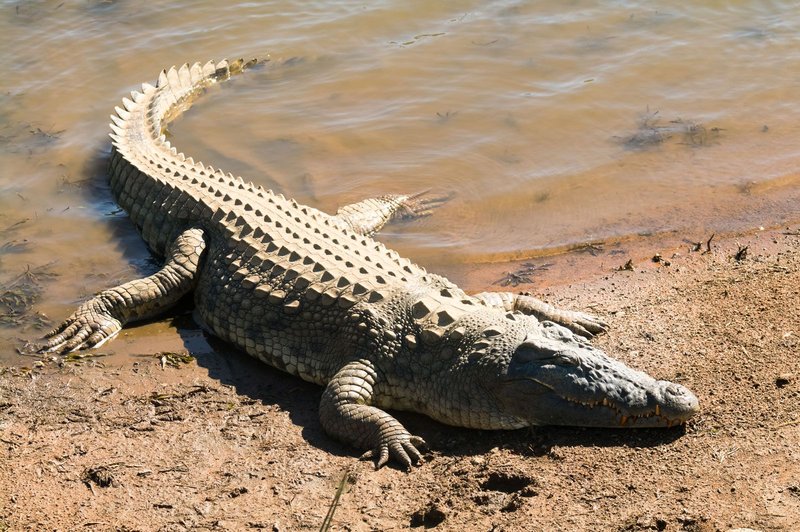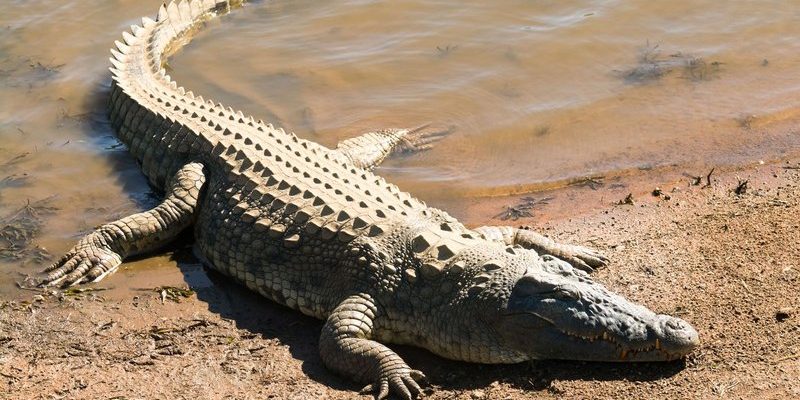
Imagine a family tree that doesn’t just have branches but instead has roots reaching deep into the past. The evolutionary journey of the Nile crocodile provides a glimpse into how creatures adapt to their environments over time. Picture this: just like we’ve changed our technology from flip phones to smartphones, the Nile crocodile has been through its own transformation, but a lot slower. Let’s dive into this tale of evolution and see how this impressive reptile became a master of its habitat.
Understanding the Nile Crocodile’s Roots
The Nile crocodile is not just any reptile; it belongs to a family called Crocodylidae, which has been around for over 200 million years. That’s longer than most dinosaurs! These reptiles are often called “living fossils” because their anatomical features have changed very little over the eons. Their ancestors thrived in a variety of environments—from rivers to coastal regions—and it’s fascinating to consider how diverse their habitats used to be.
Interestingly, the Nile crocodile is closely related to the American crocodile and the Orinoco crocodile. While these cousins share some traits, their adaptations have taken them down different evolutionary paths. Just like how people might dress differently based on their culture, these crocodiles have tailored their features according to where they live. For instance, the Nile crocodile has evolved to thrive in Africa’s warmer climates, showcasing a resilient nature that speaks to its survival skills.
In terms of appearance, the Nile crocodile sports a robust body, powerful limbs, and a broad snout that’s perfect for catching prey. Their skin, covered in bumpy scales, helps them camouflage in the murky waters, making them one of the most effective ambush predators. This blend of form and function is a great example of how evolution doesn’t just change what creatures look like; it also shapes how they thrive.
The Adaptations for Survival
You might be wondering, what exactly makes the Nile crocodile so special? For starters, these reptiles have some incredible adaptations that help them survive and thrive in their habitats. Their keen eyesight allows them to see well both in and out of the water. Imagine being able to spot dinner while mostly submerged—pretty neat, right?
Another fascinating trait is their ability to hold their breath underwater for long periods, sometimes up to two hours! This adaptation is crucial for stealth during hunting. They can quietly glide through the water and wait for the perfect moment to strike. It’s like playing a game of hide and seek, but the Nile crocodile is always the one seeking.
When it comes to diet, these crocodiles are opportunistic feeders. They’ll eat anything from fish to small mammals, and even carrion. Their strong jaws can crush bones with ease. This varied diet is essential for survival, especially in habitats where food sources can fluctuate drastically due to seasonal changes or environmental factors.
The Role in Ecosystems
Nile crocodiles play a vital role in their ecosystems. By regulating the populations of various fish and animal species, they help maintain a balanced environment. Think about it: if there are too many fish, they could overpopulate and deplete the natural resources. By keeping numbers in check, the Nile crocodile supports a healthy ecosystem.
Moreover, their presence in the water helps create habitats for other wildlife. When they dig out holes or create paths in the mud, they inadvertently provide water and shelter for various plants and smaller animals. It’s a bit of a win-win situation! By simply existing, these crocodiles contribute to the biodiversity of their surroundings.
Climate change and habitat loss are major threats to their environment. As they navigate these challenges, their survival is more crucial than ever—not just for them, but for the entire ecosystem. Protecting Nile crocodiles means preserving the rich tapestry of life that depends on them.
Behavioral Traits and Social Structure
Now, if you think Nile crocodiles are just solitary creatures, think again. While they do enjoy their alone time, they also exhibit some interesting social behaviors. During breeding seasons, male crocodiles will engage in displays of strength and dominance to attract females. It’s somewhat like a contest, with growls and physical displays—almost like a crocodile version of a dance-off!
Nile crocodiles are known to share hunting grounds and basking spots, especially in areas where food is plentiful. They form loose social groups, often basking together in the sun. While they’re not exactly best friends, they recognize the benefits of being around one another.
Their mating rituals are quite unique, too. Female Nile crocodiles build nests on land, guarding their eggs fiercely. After approximately 80-90 days, the hatchlings emerge, and the mother helps guide them to water. Watching this protective behavior is heartwarming! It’s another example of how even the fiercest creatures have nurturing sides.
The Impact of Human Activity
As with many animal species, human activity has had a significant impact on the Nile crocodile’s evolution. Overhunting for their skin and habitat destruction have threatened their populations. Imagine being a crocodile that’s been around for millions of years, only to find your home being taken away. It’s a sobering thought.
Conservation efforts are crucial in preserving these magnificent reptiles. Many countries have implemented laws to protect Nile crocodiles from hunting and habitat loss. Protected areas and national parks have been established to ensure they have safe spaces to thrive. These efforts not only benefit the crocodiles but also help maintain the ecological balance of their ecosystems.
It’s essential for us to recognize our responsibility in protecting these ancient creatures. By raising awareness about the need for conservation, we can help ensure that the Nile crocodile continues to roam the waters for generations to come.
The Future of the Nile Crocodile
Looking ahead, the future of the Nile crocodile depends on a variety of factors. Climate change poses significant challenges, as rising temperatures and changing water levels affect their habitats. The impact of pollution and human encroachment further complicates their survival.
However, there’s hope. Thanks to dedicated conservationists and researchers, efforts are underway to monitor crocodile populations and their habitats. Initiatives to educate local communities about the ecological importance of these reptiles are also crucial. By involving local populations in conservation efforts, we can foster a sense of stewardship and responsibility.
Moreover, ecotourism provides an opportunity to appreciate Nile crocodiles in their natural environments without causing harm. When people travel to see these creatures, it raises awareness and funds for conservation. Here’s the thing: it’s all about finding that balance between human activity and preserving the wonders of nature.
In conclusion, the evolutionary history of the Nile crocodile is a captivating story of survival, adaptation, and resilience. As we learn more about them, let’s remember our role in supporting these incredible reptiles and their ecosystems. Every effort counts, and together we can help ensure that Nile crocodiles continue to thrive in their beautiful habitats for years to come.

